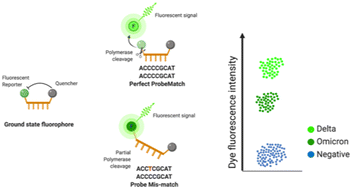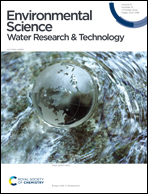Wastewater surveillance using ddPCR accurately tracked Omicron emergence due to altered N1 probe binding efficiency†
Abstract
The emergence of Omicron in routine wastewater surveillance was accurately reflected using droplet digital (dd)PCR due to a mutation in the N1 probe binding region that caused diminished fluorescence within individual droplets. Wastewater from five cities provided a higher resolution of Omicron emergence when comparing data from sequenced clinical samples.



 Please wait while we load your content...
Please wait while we load your content...